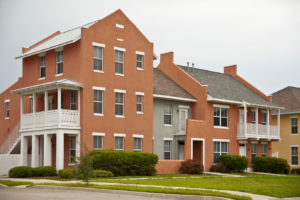Report: Tax breaks for redevelopment spurred $659 million in projects
The report by the Erie County Industrial Development Agency, conducted by Redevelopment Resources and issued Thursday, found that the agency’s policy has encouraged more than 53 redevelopment projects in and around Buffalo since it went into effect in 2008.
Those projects, totaling $659 million in value, include Bethune Lofts, Sinclair, Foundry Lofts, 500 Seneca and Phoenix Brewery Apartments.
Summer is great, isn’t it? Long evenings give way to relaxing with friends and neighbors. This deep sense of relaxation is often rooted in a busy day — perhaps a community event, time with friends out on the water, or simply yard work in your neighborhood of choice. Somehow, the the business highlights the sense calm, and cements the positive feelings and memories made that day.
Cementing positive feelings and memories
ISN’T THIS THE GOAL AND ART OF PLACE-MAKING?
The purpose of place-making is not about creating a place, believe it or not. It is all about purposefully creating opportunities for making personal connections. Physical place matters in ways that run alongside Maslow’s Hierarchy of needs. At minimum, the requirements of the space include a sense that baseline needs can be met – food / water / shelter / bathroom access, as well as a sense of personal physical safety.
Environment
These requirements can be met by providing a well-secured space that appears maintained, with adequate signage and access to clean, accessible restrooms and bubblers. Run-down spaces that seem unkempt and abandoned do not convey a sense of physical safety.
While in neighborhoods and downtowns the ideal solution for these areas includes improvements to facades and streetscapes, there is an alternative for communities on a budget: elbow grease. Invest instead in providing obvious signs of life and care: overflowing flower baskets; colorful banners and flags; brightly painted signs, seating, and bike racks; outdoor string lighting to create vibe and atmosphere. The more that locals show their love for their community in this way, memories will be made and downtown staff can focus on fixing facades and creating more impactful improvements in time.
Programming
The remaining needs build off of foundational aspects of safety in a space: a sense of social belonging; general personal respect; capacity to reach aspirational goals. This all may sound a bit deep for a simple neighborhood event, but its less so than one might imagine; and can be achieved through consistent, well-run programming of the safe and interesting spaces created.
A great example? Chalkfest in Wausau, WI. The program itself is simple: decorate sidewalk squares with sidewalk chalk (or chalk paint). Provide artists and chalk decor enthusiasts with two days to accomplish their masterpiece, and invite the public to the space so they can watch it all come together. Support attendees and artists by working with area businesses and organizations to ensure access to bathrooms as well as food and refreshments.
The Wausau, WI venue (the “400 Block” in Wausau, WI) has had significant investment over the years, but a space in your community doesn’t necessarily have to be this well-appointed. A simple parking lot provides enough open space for a similar effort. Marketing the event to artists and the public can be achieved through existing channels: connecting with area artist guilds, setting up Facebook posts, and earned media in local papers. Curating artists by requiring submissions ensures quality and positive messaging – but also ensures that the need for a sense of “social belonging” for both artists and attendees alike: being chosen to create art is an honor; seeing art that is not offensive provides a comfortable experience for attendees.
And, almost unbelievably, such a simple concept can provide the opportunity for individuals to meet their aspirational goals – whether it’s an artist that has always dreamed of sharing their work with the public, or for attendees who see this type of cultural exposure as intrinsic to their personal growth or the growth of their children – this simple approach achieves these goals.
Ultimately it comes down to providing a safe, interesting space for people to play with sidewalk chalk. Amazing, isn’t it?
While Redevelopment Resources has a deep bench of experience when it comes to significant facade and streetscape investments for communities and neighborhoods, our team understands small communities – and the low-cost tools they can leverage to re-create and program these spaces, too. No matter your budget, start your transformation by contacting the Redevelopment Resources team.
The Affordable Housing Debate
Affordable Housing is often a lightning rod for debate. This debate transcends community size, although the debate takes on a slightly different flavor depending on community demographics and neighborhood make-up. There has been a spate of reports, coupled with expected changes in federal tax credit policy, that have brought the conversation around Affordable Housing, and the federal programs that support it, to the fore in 2017.
Across the nation, demand for rental housing has surged, particularly since the housing collapse in 2008. For many individuals and communities, neither the job, housing or credit market have fully recovered. According to a recent Frontline/PBS special titled, “Poverty, Politics and Profit,” which focused on many facets of the topic of Affordable Housing, there are more than 1 million US renter households where tenants are paying at least half of their monthly income on rent. From 2014-15 (latest available) in Wisconsin, the total percentage of households spending 30% or more of their total monthly income on rent is just under 31%.
While the development of new affordable housing units is appropriate in response to the increased demand, negative perceptions of these developments continues, particularly in regard to preconceived notions about tenant profiles (race, employment status, the ability of tenants to follow neighborhood social norms) and fears of impacts on neighborhood property values. These fears fuel the NIMBYism that accompany these projects, and the resulting segregation that occurs when NIMBY efforts succeed. Projects will only be developed where they “can get done,” and as a result, the neighborhoods and communities that are more willing to invite these developments in are those that are most heavily impacted by the lack of affordable housing.
Confusion regarding Low Income Housing Tax Credit (LIHTC) projects in particular is common. There is a lack of understanding on how the equity mechanism works; on the difference between reduced rent and government-funded vouchers; and the populations targeted for tenants. In particular, there may be a perception that developers could “save federal money” by not taking on LIHTC equity — not realizing the money was budgeted for and already ‘spent’. As a result, the protests largely serve only to diminish local capacity to capture tax base and investment value.
Finally, there is often the pull to “other-ize” the individuals that would occupy the units expressed in the form of discrimination against those defined as “low-income” earners. In one case, the most vocal opponent to a proposed development lived in the neighborhood of the project and was unaware until attending the public meeting, that not only were they – at their current income – eligible to live in the units, but that they could live more affordably in a new unit, as opposed to the aged stock in which they currently resided. By the end of the meeting, they were considering a move.
Another aspect of ‘neighborhood impact’ is the concern about the possible negative effect of the development on area property values. In some cases, the neighbors fear that a multi-family development will lower their home values, while others fear that such a development will raise the neighborhood tax base too high. Amazingly, one City Council member has been quoted to say, “I don’t need a $5 million impact in my downtown if the development is something like this.” For context, at the time of this comment, the total downtown assessment roll totaled $10.8 million. Data indicates that property value impacts vary per community. For example, Trulia published a blogspot which showed the impact of Affordable Housing units on surrounding property values was negligible, while on July 6, Tracy Jan published in the Washington Post that building affordable homes was a surprising way to raise home values.
While there have been cases of corruption in the LIHTC program and an overhaul in how the funding is managed has been proposed, the market remains robust for Affordable Housing. The fact remains that need for affordable rental units continues to grow, and as long as demand continues for tax credits by major equity players, the projects can be developed profitably. This results in a win for the private sector, a win for municipalities (via growth in tax base, expanded economic opportunity, and higher quality of life for a significant portion of their population) as well as a win for some of the nation’s most vulnerable citizens.
If your community is ready to take on the positive benefits of an Affordable Housing project with a reputable partner, give Redevelopment Resources a call. We are excited to engage in transformative developments in municipalities that are ready to expand their affordable housing stock.






